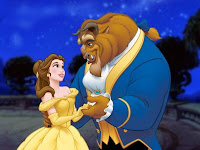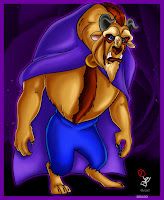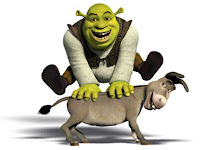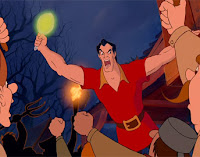Film Certification (Mrs Leconite)
Film censorship concerns everyone that watches films. It has come part of our lives and is for protection. Its for the protection of society. Every film has a certificate that verify's what the film includes. Film certifacate is to make people aware of what they are watching and what the film would include.
Film Certification
Uc - Universal Particulalry suitable for children
U - Universal
PG - Parental Guidence Reccomended
12 - Suitable for persons over the age of 12
15 - suitable for persons of ther age of 15
18 - suitable for persons over the age of 18
These diversions exiist for about 85 years. very few films ge banned, they get sent back to the studio or the productions to be edited or cut for the audience . Films get checked by BBCF (British broad film classification) first to classify which certifcate is more suitable.
 Uc
UcIts unpredictable to know what a child may be upset with, because differrent children can be affected by diffrent things. However U films should be suitable for people over the age of 4. If the film has any scenes with violence, horror or threat it would finish quickly and tell the children that everything would be fine also warn them that there wrong things to do. U films are the type of films that make it clear to kids what is wrong and what is right.
Theme /Topics - Films and subject that is generally suitable for younger audience probably educational.
Language - There should be very little mild language used.
Nudity - There can be occasional glimpses of people who have no clothes on, but not lined to any sexual content.
Sex and relationships - Only mild references such as making love and mild behaviour (e.g. kissing) are allowed.
Violence and threat - very little violence only, little bit of threat and menace are allowed
Dangerous Behaviour - Definatly no dangerous behaviour is allowed as children influenced very easily
Weapons - There houldnt be any focus on weapons especilly the ones easy to get hold of
 Horror
Horror - There shouldnt be any scary moments of monster, ghosts and witches and should be over quickly, also let the young person know that it everything will be okay.
- Drugs shouldnt be mentioned in any circumstances unless it is to teach them that drugs are dangerous.
Discrimination - there shouldnt be any language that would offend a person’s race, colour, gender, sexuality or disability, religon or beliefs unless the film or DVD teaches it to be wrong.
PG Parental Guidence

These films can be viewed by any ages but some scences can be unsuitable for young people.
Children of any age can watch these films with or without an adult, these films should be a problem to any child above 8. However the PG lets the parents now that a content of the film can upset a sensitive child.
Theme/Topics - These films must include things to enlighten children about some truths about life such as crime, racism, bullying or violence in the home. There must be nothing which suggests these are good things.
Language - Mild bad language only.
Nudity - Some nudity is allowed, except if it includes sexuality.
Sex and Relationships - Sex can be mentioned, suggested or joked about, but only discreetly.
Violence and Threat - It can include more violence than there is used in U, but without detail. Violence which takes place in a comedy, fantasy, or historical film may be treated less strictly.
Dangerous Behaviour - There should be no fighting techniques or other harmful and dangerous activities that children might easily copy.
Weapons - There shouldnt be any weapons taking place or shown attractive in anyway. The weapons shouldnt be thing that can easily get hold of.
Horror - Frightening scenes should not be too long or scary. Horror scenes which are part of a fantasy film may be treated less strictly.
Drugs - There shouldnt be anything about illegal drugs unless the film carries an anti-drug message.
Discrimination - There can be no language or behaviour shown that would offend a person’s religion, colour, gender, sexuality or disability, unless the film or DVD teaches it to be wrong or is presented within an educational or historical context. Discrimination by a character who is seen as a hero by the audience is also unlikely to be allowed.
Suitable for 12 years and over. No-one younger than the age 12 is allowed to watch an 12A film unles they have an adult that allowes them. No-one younger than 12 may rent or buy a ‘12’ rated video or DVD. Responsibility for allowing under 12s to view lies with the accompanying or supervising adult.
Theme - Themes with mature content are alowed but the content must be suitable
Language - the use of language must be used very mild and e.g f*** must be censoerd
Nudity - Nudity is allowed, but it mustn't contain too much detail
Sex - Sexual activity can be shown but not beyond what is suitable for them, it can be shown educational but again wihtout too much detail.
Violence -Violence shouldnt be shown with any detail. There should be no emphasis on injuries or blood. Sexual violence may only be implied or discreetly indicated.
Imitable techniques - Dangerous techniques like suicude's or combats are less likely to be alowed. There shouldnt be any use of weapons that are easliy accessed
Horror - No irratating scences are to be alowed. Occasional gory moments only
Drugs - Use of drug shouldnt be insturctional and must be clear that is is inappropriate
Discrimination - The film or DVD as a whole must not approve of language or behavior that would offend a person’s religion, colour, gender, sexuality or disability. Aggressive use of this type of language and behavior is unacceptable unless clearly not approved of.
No-one younger than the age of 15 is allowed to watch a film in a cinema, buy or rent a dvd or the film.
Theme - No theme is forbidden for 15 year olds , the theme provided is appropiate.
Language - There may be frequent use of strong language; the strongest terms (eg ‘cunt’) are only rarely acceptable. Continued aggressive use of strong language and sexual abuse is unacceptable.
Nudity - There are no constraints on nudity in a non-sexual or educational context. Sex - Sexual activity and nudity may be portrayed but without strong detail. The depiction of casual sex should be handled responsibly. There may be occasional strong verbal references to sexual behaviour.
Violence -Violence may be strong but may not dwell on the infliction of pain, and of injuries. Scenes of sexual violence must be discreet and brief. Imitable techniques - Dangerous combat techniques such as ear claps, head-butts and blows to the neck are unlikely to be acceptable. There may be no emphasis on the use of easily accessible lethal weapons (in particular, knives).
Horror - Sustained or detailed infliction of pain or injury is unacceptable.
Drugs-Drug taking may be shown but clear instructive detail is unacceptable. The film as a whole must not promote or encourage drug use.
No one younger than 18 is allowed to watch an 18 video in cinemas and not alowed to buy or rent a dvd or film.
The BBFC respects the right of adults to choose their own entertainment, within the law. It will therefore expect to intervene only rarely in relation to ‘18’ rated cinema films. In the case of videos, which are more accessible to younger viewers, intervention may be more frequent.
There are no constraints at this level on theme, language, nudity or horror. The Board may, however, cut or reject the following content
Any detailed portrayal of violent or dangerous acts which is likely to promote the activity. This includes also instructive detail of illegal drug use The more explicit images of sexual activity - unless they can be exceptionally justified by context
Where sex material genuinely seeks to inform and educate in matters such as human sexuality, safe sex and health, exceptions to the normal constraints on explicit images may be made in the public interest. Such explicit detail must be kept to the minimum necessary to illustrate the educational or instructional points being made.
Sex Works at ‘18’
Material which appears to be simulated is generally passed ‘18’, while images of real sex are confined to the ‘R18’ category



























